Text by Melissa Waters and Kim-Lee Loggenberg
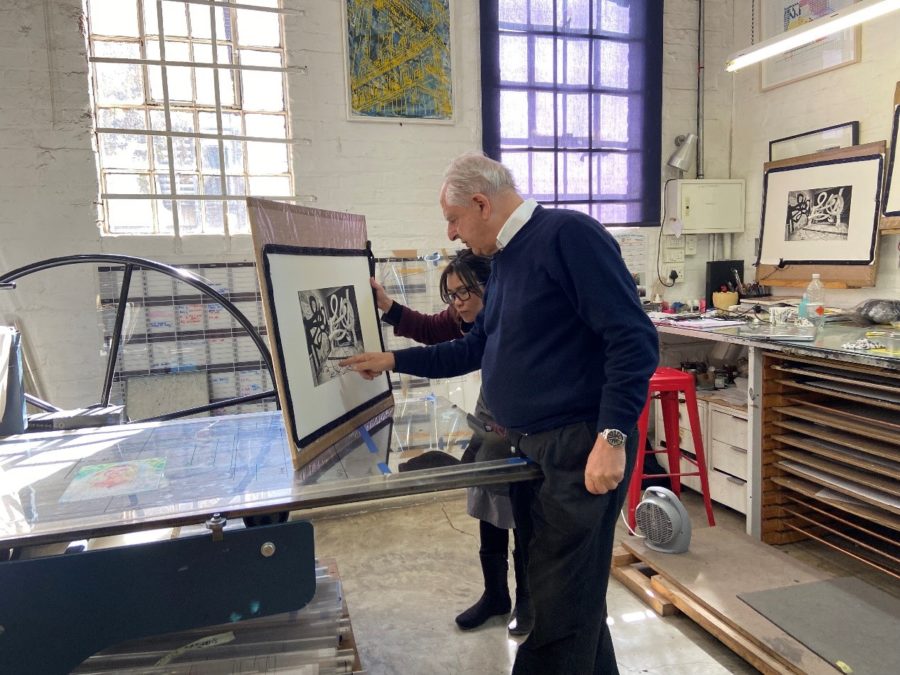
Printer Kim-Lee Loggenberg and William Kentridge examining a proof of Laocoon in the DKW, 2021.
The Studio Life photogravure series began in 2020 as an accompaniment to films William Kentridge was making, dealing with the place of production, confinement and sanctuary for an artist: the studio. In 2022 the process continues, with exciting new dimensions in the form of added drypoint marks on the plates.
Briefly defined, photogravure is a labour-intensive photomechanical process of etching a photograph onto a copper plate through tonal values (aquatint), which creates half-tone images. This makes tone an indispensable characteristic of the photogravure and aquatint a fundamental technique in this printing process.
The etching of a photograph onto a copper plate allows for rich tones as well as an incredible amount of detail characteristic of a photograph. The tonal range of the photograph records in the immediate surface of the copper as depths, ranging from shallow to deep pits. Once etched the plate is wiped and printed the same way as a traditional etching plate and can therefore also be editioned. Additionally, there is potential for the artist to work directly onto the plate, for printing with many ink colours, for the artist to choose from a range of different paper types and experiment with differences in the wiping of the plate – all of these Kentridge explored further in the photogravures produced in 2021.
– Kim-Lee Loggenberg and Tiina Liebenberg in A step-by-step: the technicality of making a photogravure in the Studio Life series by William Kentridge READ MORE…
The making of these prints has given new meaning to the idea of collaborative printmaking. Kim-Lee Loggenberg is the editioning printer on this project, working closely with Kentridge to develop each image between the DKW and William Kentridge Studio. Before this can happen, the photogravure plate is created by Zhané Warren at Warren Editions in Cape Town. Further collaborators include photographer Chris-Waldo de Wet, and Stella and Louis Olivier, who worked on the Laocoön image, as photographer and sculptor respectively.
The first six photogravures were all produced quite traditionally, featuring only the photographic image gleaned from Kentridge’s studio activities and filmmaking, perfectly rendered in etched form. An early work in the series, Felicia Ida Felicia (2020), is the only one of the first six to include another component: a piece of of Gampi chine collé has been cut to fit the size of Felicia’s face for extra depth of tone.
The seventh work in the series, and the first of 2022, is the first to include drypoint marks added by Kentridge after the photogravure process has been completed. Laocoön (2022) features the photographic image of a large-scale sculpture, a nod to the ancient Hellenistic marble work, flanked by a huge, torn paper shadow tacked to the wall in Kentridge’s studio.
In the foreground, populating the floor space of the studio, is a curious structure of filamentous marks, mirroring the form of the sculpture and its shadow. Amongst the tendrils sit a number of crude vessels, including a French style cafe glass. These are all drypoint marks, scratched into the surface of the photogravure plate by Kentridge.
The result produces a marvellous folding and cycling of ideas surrounding the artists’ studio and practice – a constant re-iterating, re-drawing and re-processing of forms and making practices. A drawn sketch becomes a sculpture becomes a shadowed silhouette becomes a film becomes a photograph becomes a print becomes a scratched sketch within the print, and on and on… a typical method of working for the artist.
For Kentridge, the thinking that went into this image includes the loppy form of cursive writing, and how this in turn relates to the form of barbed wire, particularly recalling the trenches of World War I. The loops and loopy form of this work thus speak of both freedom and imprisonment for Kentridge. The link to the ancient Greek sculpture is, in fact, tangential.
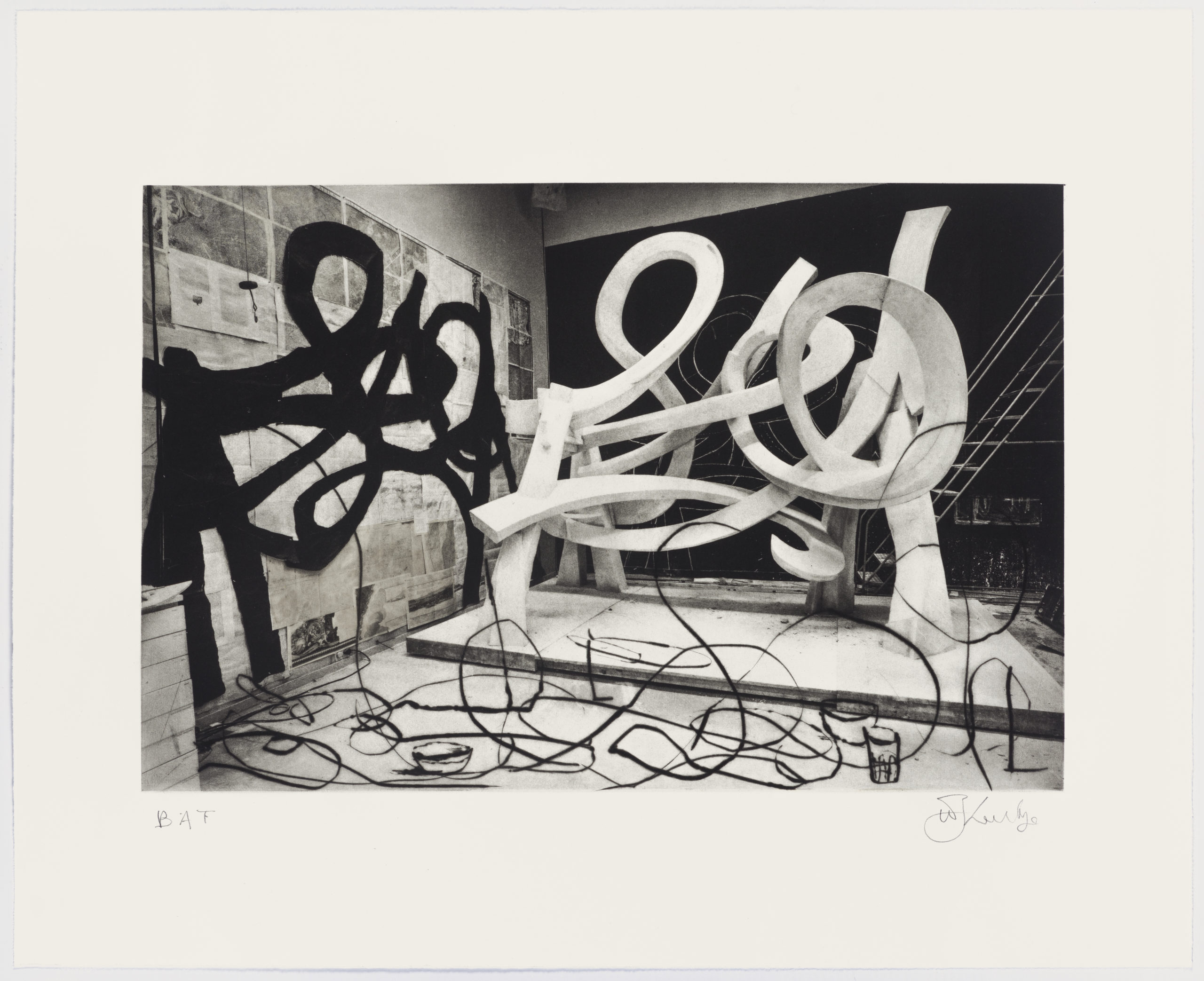
Studio Life: Laocoön, 2022
Photogravure, drypoint and chine collé
Paper Size: 44 x 54 cm
Image Size: 28 x 42.5 cm
Paper: Hahnemühle Natural White 300gsm, Gampi white MM20 and Tosa Washi
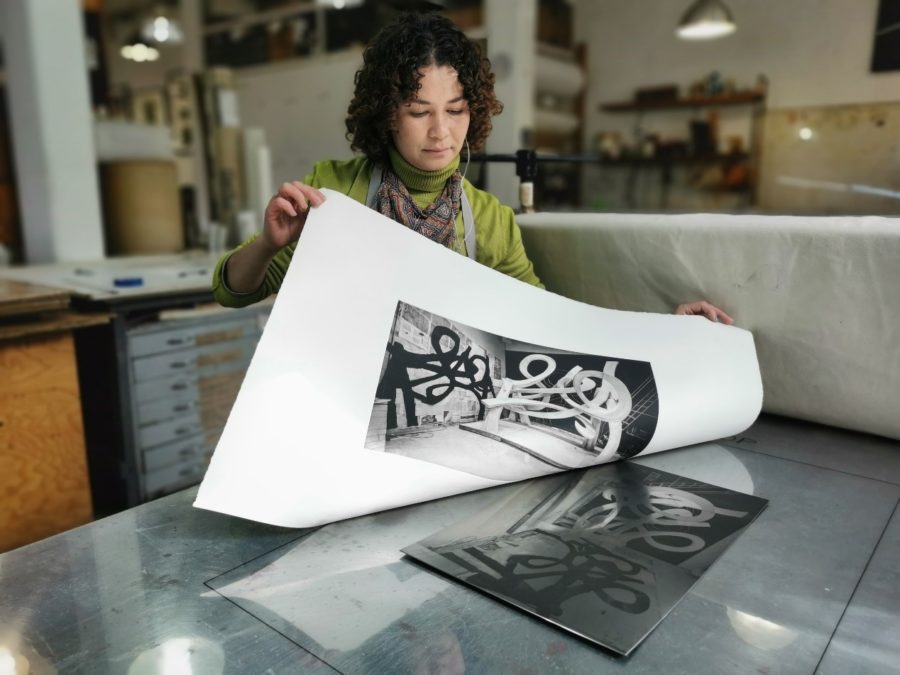
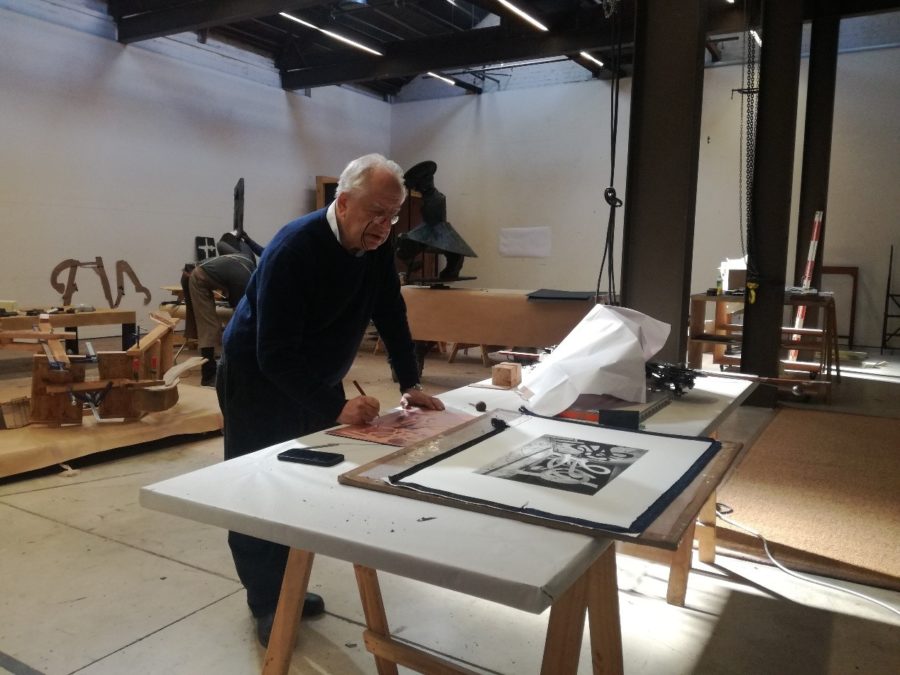
Left: Kim-Lee pulling a proof of Laocoön prior to the addition of drypoint, Right: Kentridge adding drypoint marks to the copper plate.
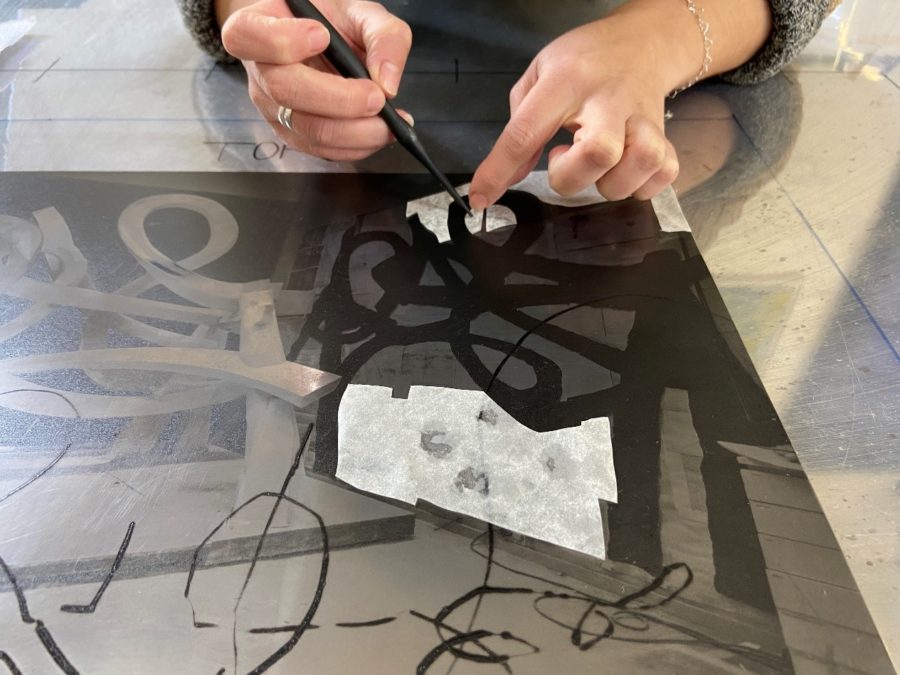
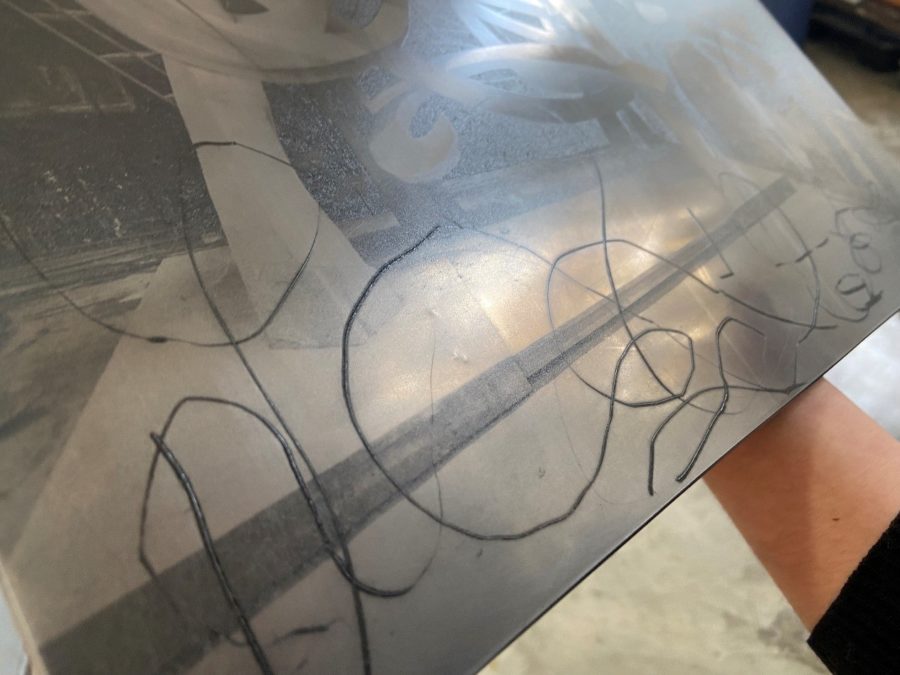

Top: Kim-Lee placing carefully cut pieces of chine onto the plate before printing, Left: The inked-up plate showing the photogravure marks and the freehand drypoint marks, Right: Detail of the drypoint marks on Laocoön.
The next Studio Life work, The bullet has left the barrel, leaves the viewer deciphering which marks are drypoint ones and which are drawn charcoal marks on the artworks pinned to the walls of the studio, originating in the initial photogravure process. In every one of these new Studio Life works, Kim-Lee wipes the plate in a very specific way to keep the drypoint marks soft and chunky, so that they look like a drawn mark.
The foreground drypoint additions in The bullet has left the barrel add depth to the scene and a heightened dimensionality, just like in Laocoön.
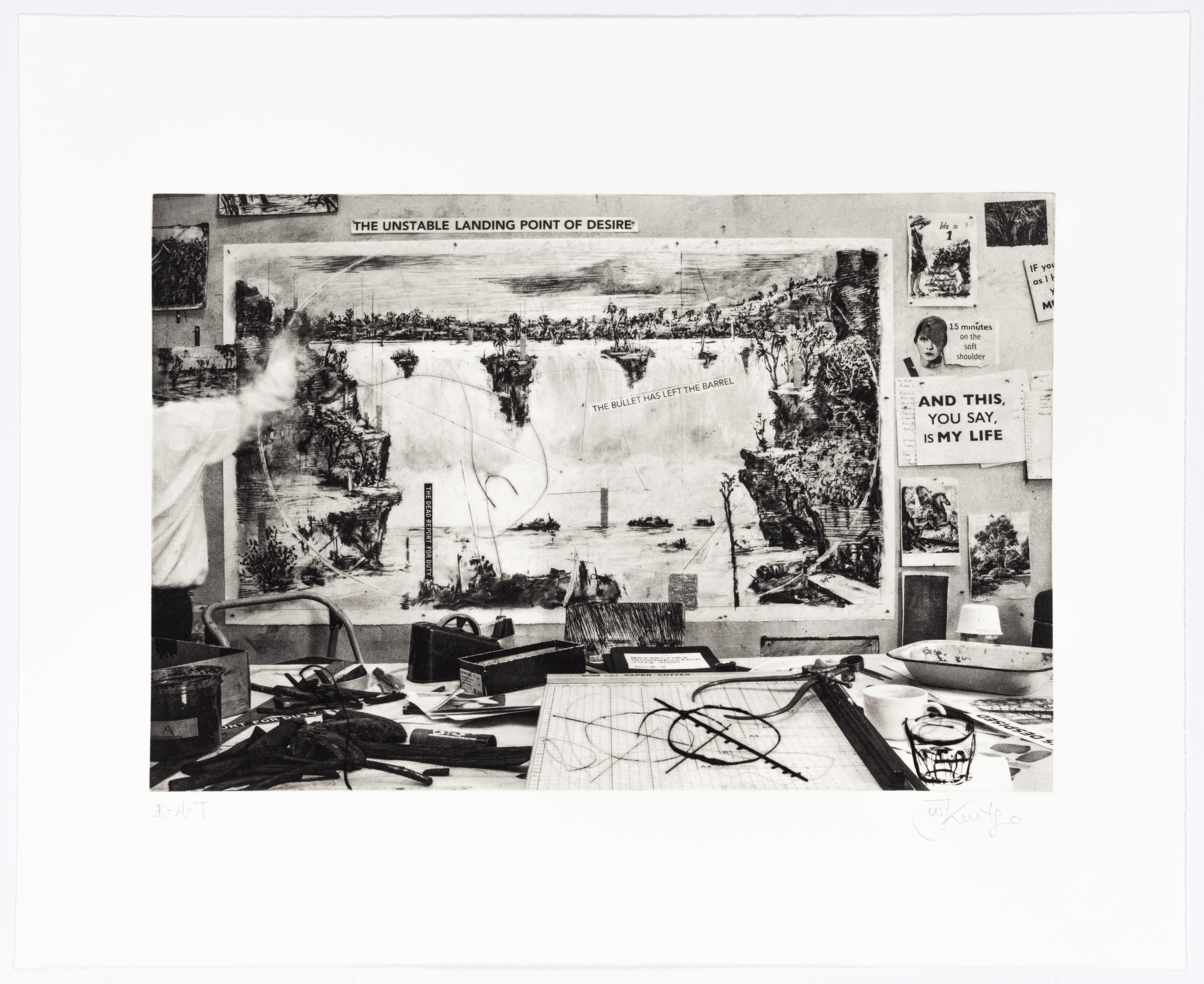
Studio Life: The bullet has left the barrel, 2022
Photogravure and drypoint
Paper Size: 44 x 54 cm, Image Size: 28 x 42.5 cm
Paper: Hahnemühle Natural White 300gsm
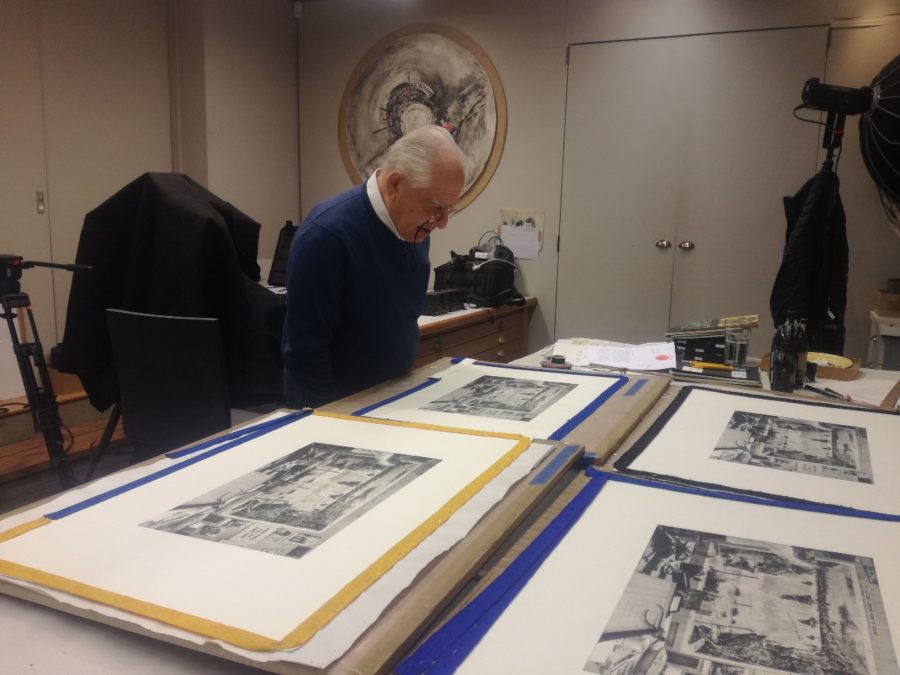

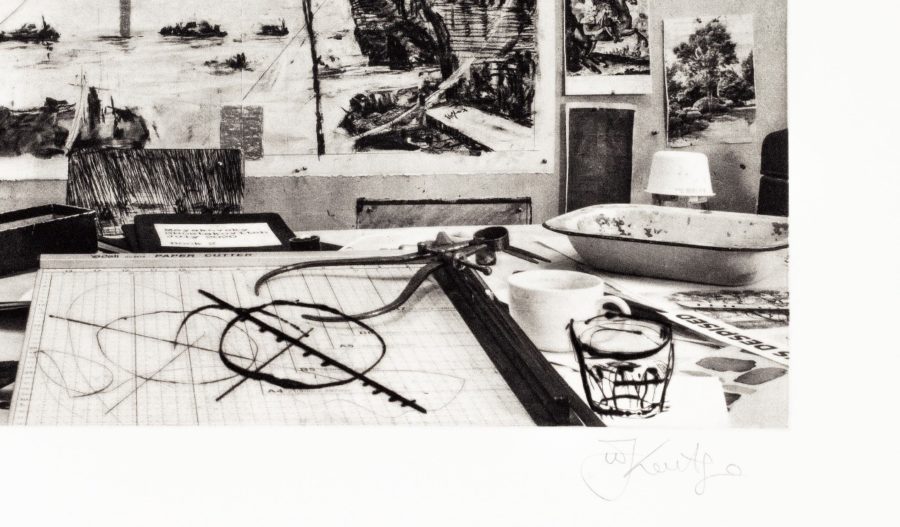
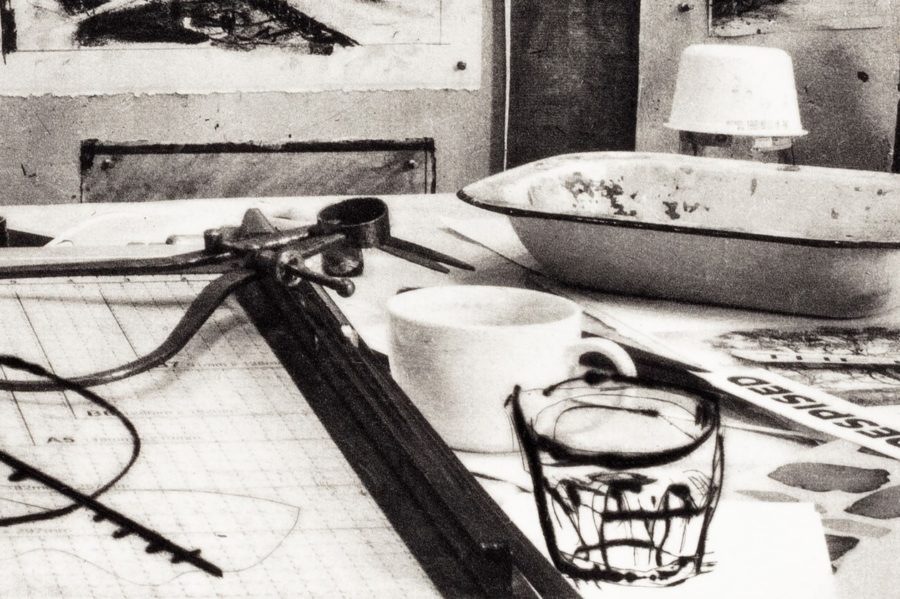
Top left: Kentridge examining proofs of The bullet has left the barrel at his Parktown studio, Top right: Kim-Lee in the final stages of preparing the plate for printing – wiping the last residues of ink off the surface with a light dusting of chalk on the fat of her palm, Bottom left and right: Details of The bullet has left the barrel showing the drypoint additions.
The most recent Studio Life work to be completed is Finally memory yields, an image that does not readily reveal some more covert drypoint marks. Hanging the upper corners of the frame are two sketches of scratched lines, and another slightly wonky, fuzzy glass sits atop scattered papers on the desk. Two figures are pictured, in motion. Blackboard, the third Studio Life work, created in early 2021, also pictures two Kentridge figures in the frame, each scratching away with chalk on blackboard surfaces. Kentridge views many of the Studio Life works as illustrating conversations with himself around his practice and process, thus the doubling of figures. He likens this to the two cells of stereoscopic photographs.
In due course, another three Studio Life works will be completed. Contact [email protected] for availability and pricing.
To read about the making of a photogravure print, see this link.
For more on Kentridge’s work, visit our website.
To view and read about the first six photogravures, see our viewing room.
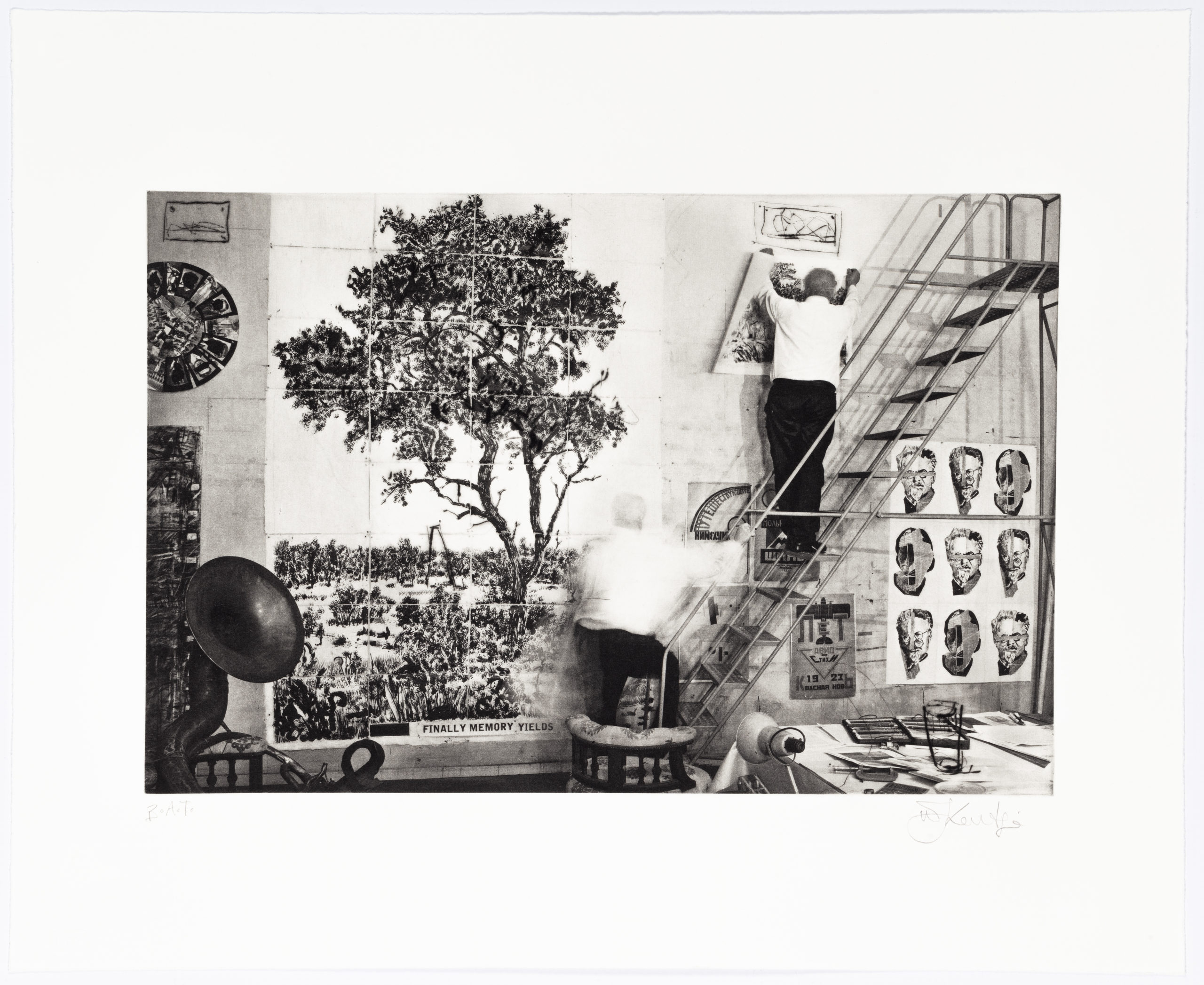
Studio Life: Finally memory yields, 2022
Photogravure and drypoint
Paper Size: 44 x 54 cm
Image Size: 27.8 x 42.2 cm
Paper: Hahnemühle Natural White 300gsm
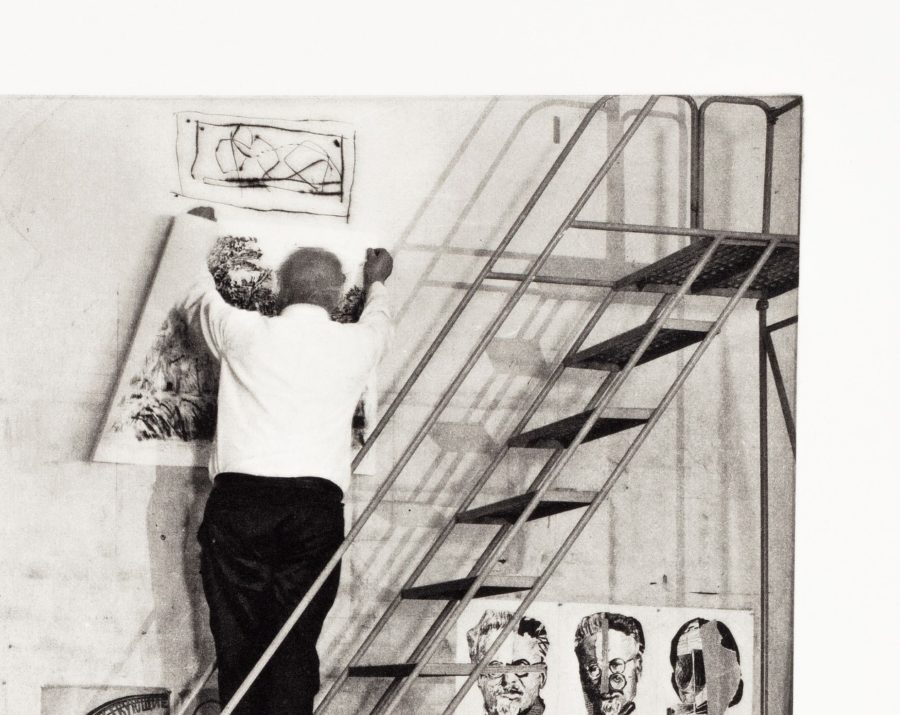
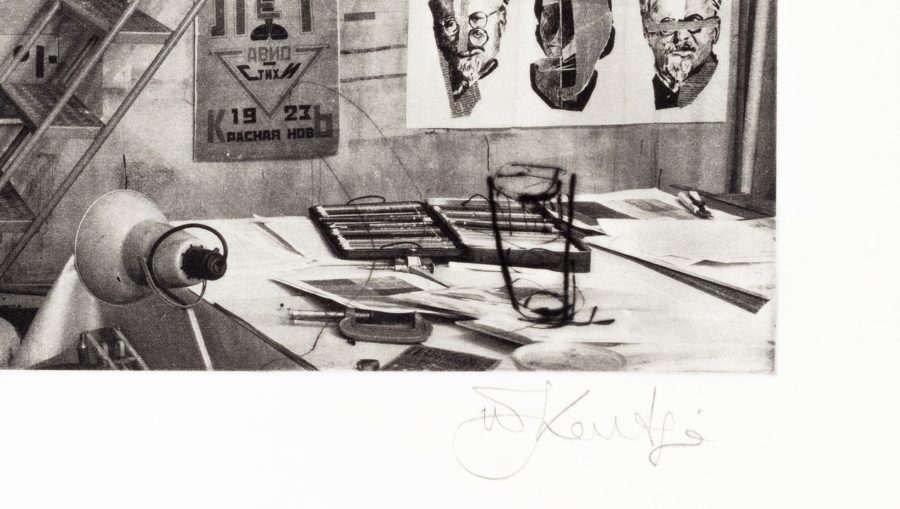
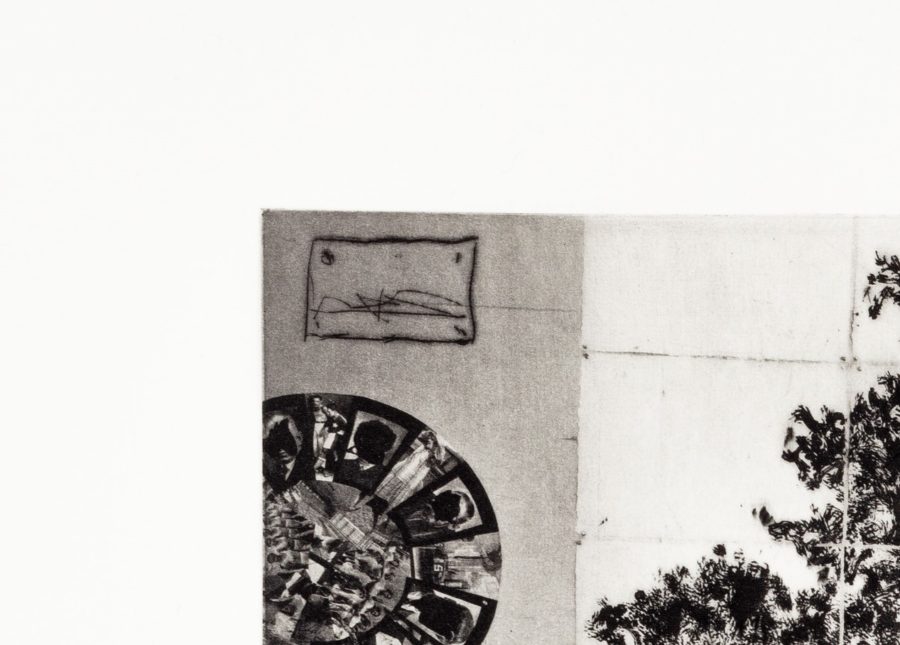
Details of the drypoint marks in Finally memory yields.